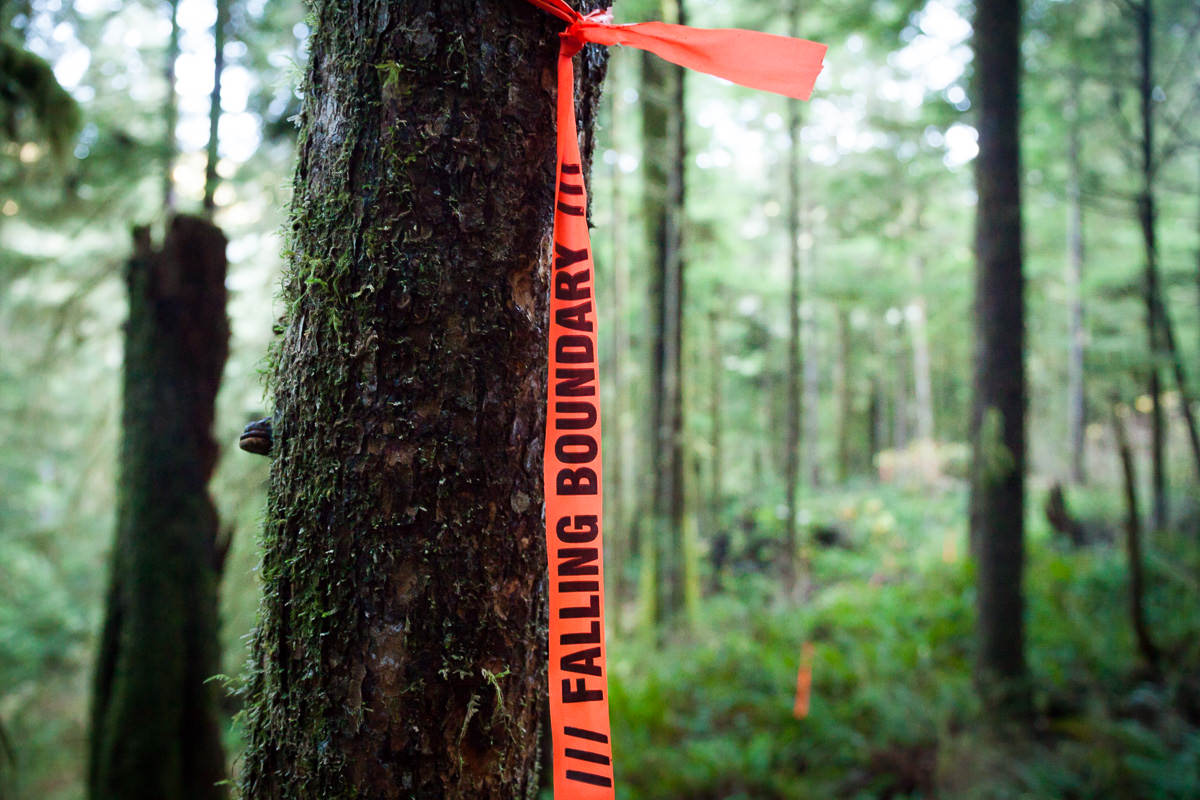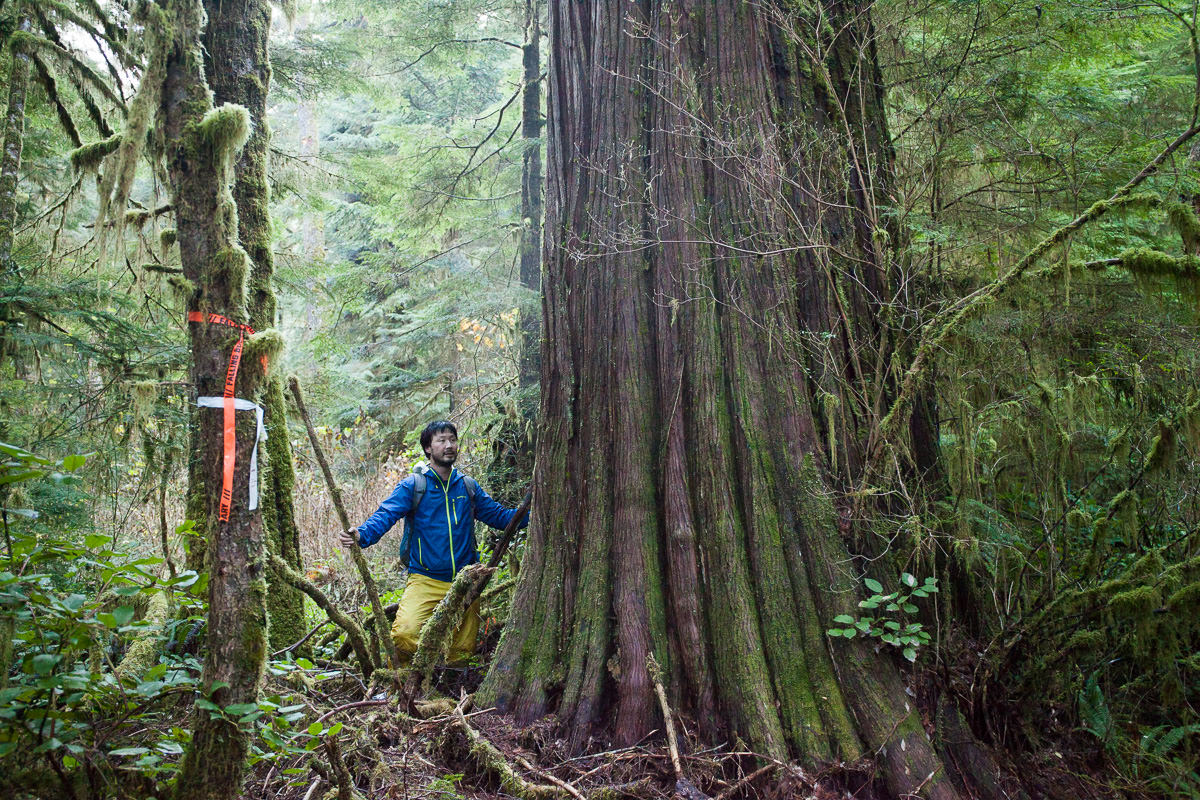On a recent trip to the endangered Central Walbran Valley on southern Vancouver Island, my colleague Ken Wu and I worked to obtain accurate measurements a colossal western redcedar tree known as the Tolkien Giant (GPS: 48.64569, -124.601246). After some scrambling through the thick underbrush, we managed to wrap it with the long tape. Preliminary measurements put the ancient tree at 14.4 metres (47 feet) in circumference or 4.6 meters (15 feet) in diameter, and about 42 meters (138 feet) in height. This makes it the 9th widest western redcedar in BC, according to the BC Big Tree Registry: http://bit.ly/1Iuf9Tv It's often hard to grasp the sheer size of these giants, and even harder that many are still at risk of being cut down. The Tolkien Giant currently stands in a tenuous forest reserve known as an Old-Growth Management Area and is thankfully protected for now however, just a couple hundred meters away lies 1 of 8 cutblocks proposed by logging company Teal-Jones. Here we came across the foreboding orange flagging tape marked "Falling Boundary", as well as more giant trees. We nicknamed one incredible specimen the Karst Giant due to the band of limestone that is prevalent in this area. The Karst Giant has been tentatively measured at 12.1 meters (40 feet) in circumference or 3.9 meters (13 feet) in diameter. Although it doesn't make the top 10, it's still an exceptional tree (photo below).
At almost 500 hectares in size, the Central Walbran Valley is home to one of the largest tracts of contiguous old-growth forest found outside of parks on southern Vancouver Island, a region which has lost 96% of its valley bottom old-growth due to logging. It's an ecological and recreational jewel that must be protected by the BC government from the current logging proposals.
The dense and highly productive ancient forests found here also provide some of the most incredible bushwhacking and exploration opportunities. One truly feels like they've stepped back in time to a prehistoric-like wilderness visited by few to none on Earth. You never quite know what unique tree, karst feature, or creature might by lurking around the next corner.
See some news coverage from our Walbran trip here:








